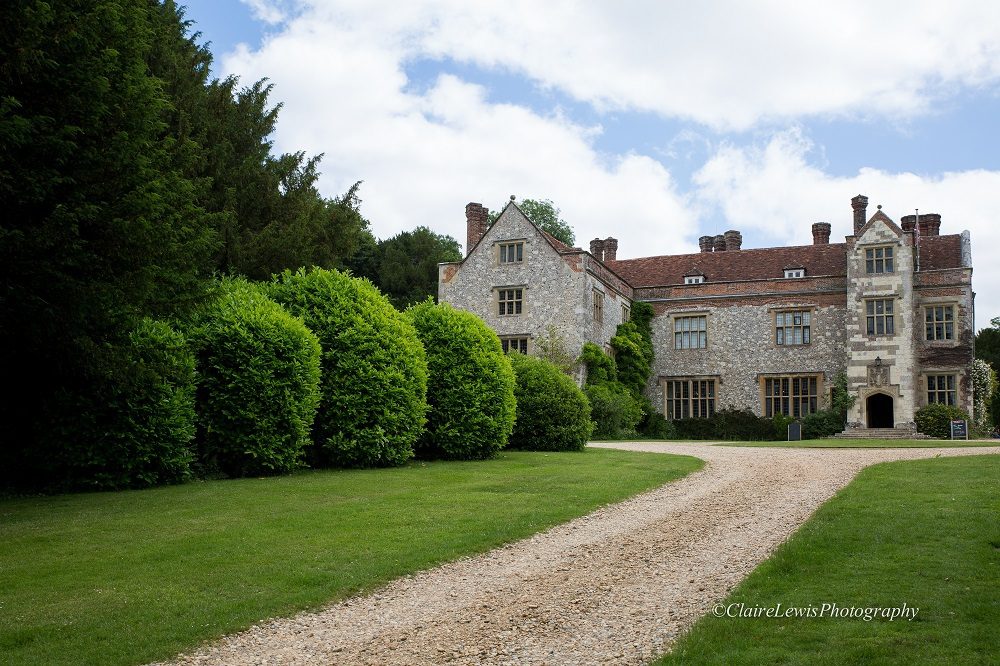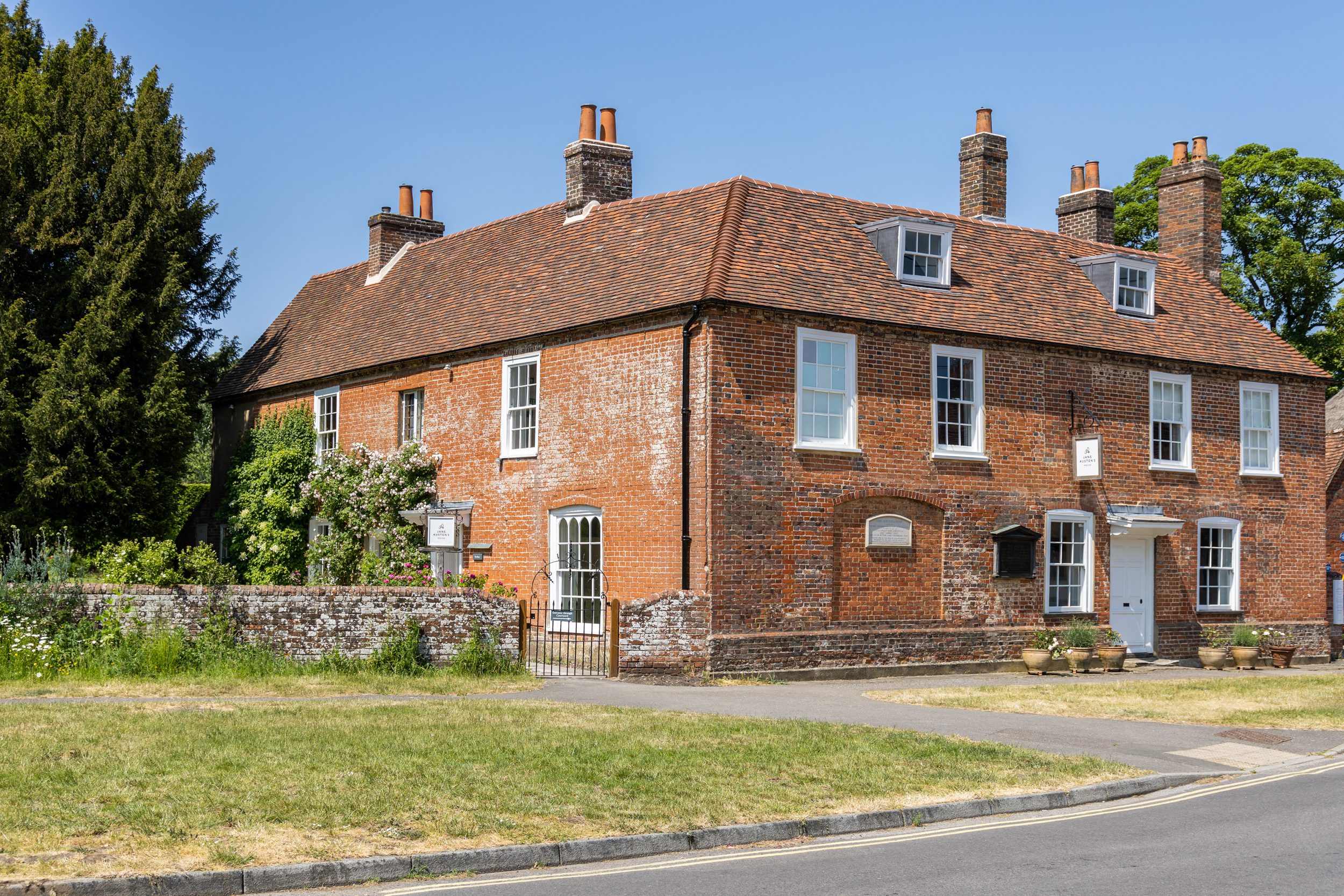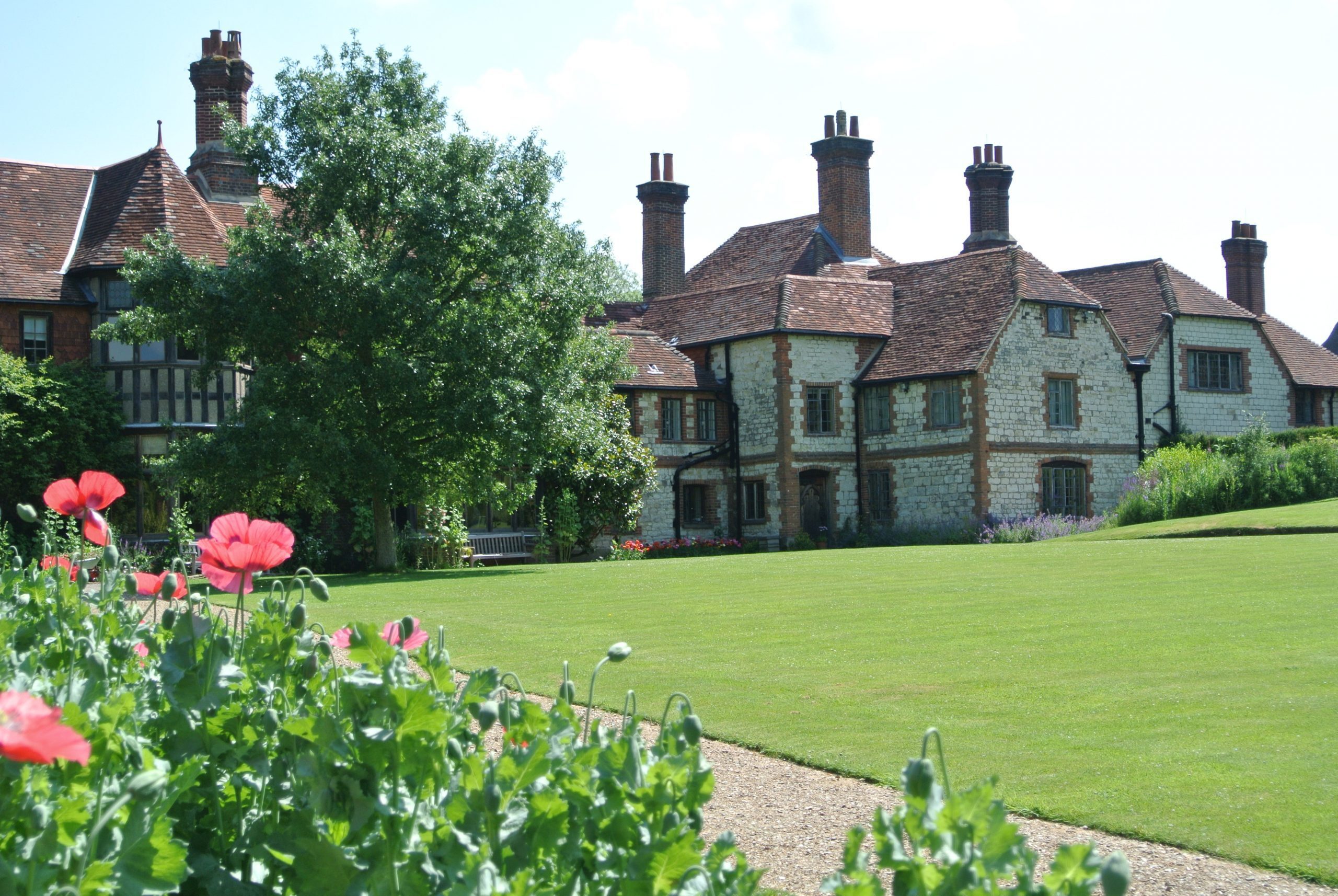Things to do |
Attractions |
Gardens & parks |
Museums & galleries
Chawton House
Address:
Winchester Road, Chawton, GU34 1SHAbout Chawton House
If you are looking for things to do in Hampshire, a visit to Chawton House makes a great day out. Whether you are inspired by women’s literature, keen to follow in the footsteps of Jane Austen in Hampshire, looking to explore the gardens, or simply to enjoy lunch in The Old Kitchen Tearoom, our friendly staff and volunteers will give you a warm welcome.
The house you can visit today is over four hundred years old. It was built by the Knight family in the 1580s following the acquisition of the estate by Nicholas Knight in 1578. There was already a manor house on the estate prior to this, first recorded in 1224. The house has undergone centuries of change and development as it has passed through different hands, making it rich with quirky and fascinating features, from graffiti on paintings and ‘witch marks’ on walls, to heraldic stained glass windows and ornately carved fireplaces.
The house’s most famous association is with Jane Austen, whose brother Edward, inherited the house when distant family members Thomas and Catherine Knight, made him their heir. Edward offered the bailiff’s residence, five minutes’ walk from Chawton House, to his mother and sisters, Jane and Cassandra, and it was there, now Jane Austen's House, where Jane enjoyed the most prolific period of her writing life.
Directions
By train, from London Waterloo, there are hourly trains to Alton. There is a taxi rank outside the station. Alternatively call Wilson’s Taxis on 01420 87777, 85858 or 82226.
By car, From M25 Junction 10, A3 Guildford bypass, A31 Farnham & Alton bypass. Turn off left at A31/32 junction roundabout to Chawton and follow the brown tourist signs. From M25 Junction 12, M3 to Junction 5, B3349 to Odiham and Alton, follow signs for Chawton. Please note, there is no parking at Chawton House, unless you are a disabled badge holder and have called up in advanced.
By bus, the number 64 Stagecoach service runs daily between Alton train station and Winchester, stopping at the A31/32 junction roundabout near Chawton. The number 38 service from Petersfield to Alton offers a less frequent alternative option, stopping in Chawton. For further details on bus times, please visit the Stagecoach website.
On foot or bicycle & Travel Planner, you can follow the Jane Austen Trail Alton, Jane Austen Trail Chawton, or Use the Travel Planner.
Group Visits
A typical group visit takes around 2 hours, although you may wish to spend longer onsite taking in our changing programme of exhibitions, exploring the gardens and parkland, or enjoying a picnic on the South lawn. In addition to running regular bookable tours for individuals and small groups (see our What’s On pages), we are open for group tours by appointment. To find out more and for prices, you can download the Group Visits Guide.
They also offer a series of specialist talks offsite and online, on topics including Jane Austen, Gothic literature by women, and Curator’s talks on our exhibitions. If you would like to find out more about bespoke private tours, download the Private Tours Guide.
Venue Hire
As a sizeable manor house on a picturesque estate just over one hour from London, Chawton House offers indoor and outdoor spaces for private hire to suit any occasion. To discuss your event, please email hire@chawtonhouse.org.
Facilities & Accessibility
Ramp access from the car park to the North Porch door
Steps, stairs and uneven flooring inside the House
Many of the floors are uneven
All dogs welcome outside
Accessible toilets outside
House & library
Garden
Tea rooms
Day Ticket Prices (House and Gardens)
Adult: £12.50
Student/Under 26: £10.00
6-16: £6.00
Under 6: Free
Disabled + carer: £5.00
ArtFund: £6.25
Historic Houses: Free
Gardeners’ World individual: £6.25
Gardeners’ World 2for1: £12.50
Family (2 adults + 3 kids): £30.00
Family (1 adult + 3 kids): £18.00
Day Ticket Prices (Gardens only)
Adult: £8.00
6-16: £6.00
Under 6: Free
Annual Ticket Prices
Adult: £25.00
Student/Under 26: £20.00
6-16: £12.00
Disabled: £10.00
Family (2 adults + 3 kids): £60.00
Family (1 adult + 3 kids): £36.00
Opening hours
-
Monday
10:00am - 4:30pm
-
Tuesday
10:00am - 4:30pm
-
Wednesday
10:00am - 4:30pm
-
Thursday
10:00am - 4:30pm
-
Friday
10:00am - 4:30pm
-
Saturday
10:00am - 4:30pm
-
Sunday
10:00am - 4:30pm












